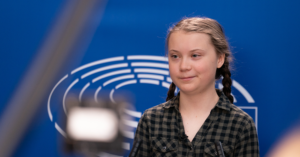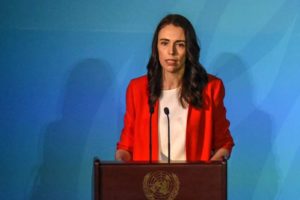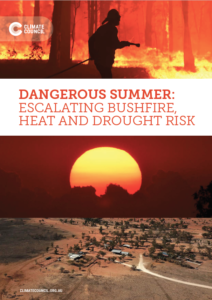Here’s a brief overview of expectations of the climate talks taking place in the Spanish capital over the next two weeks – who’s going, what the key issues are, Australia’s role and other questions that you might have on your mind.
On the eve of the international climate talks in Madrid, the United Nations chief, António Guterres, said that the world’s efforts to stop climate change have been “utterly inadequate” so far and there is a danger global warming could pass the “point of no return.”
And here’s a really good overview video:
What is the COP25 climate summit?
‘COP’ is the Conference of the Parties to the United Nations Framework Convention on Climate Change (‘UNFCCC’). This conference is more than your everyday conference however. It is the peak decision-making body for the world’s climate change commitments, and is core to making sure that the Paris Agreement is implemented.
The ‘25 in ‘COP25’ signifies that this is the 25th Conference of the Parties (although, again, it’s no party). There is a UNFCCC COP most years—though a few have been missed—so yes, these talks have been going on for a quarter of a century now!
The Paris Agreement has been signed by 194 countries and the European Union. The only countries who have not signed—Syria and Nicaragua—have both indicated that they consider themselves bound to it even though they haven’t signed yet.
The Agreement is a complex document with lots of different aspects. Its main goal is to drive collaborative effort from the international community toward limiting global temperature rises this century well below 2 degrees Celsius above pre-industrial levels. The Agreement has a stretch goal of limiting global temperature increases to 1.5 degrees—a much safer target.
The agreement also tackles several other issues as well. One of the largest sticking points is the need to provide finance for the developing world to assist them in adapting to a problem that was mostly cause by the world’s richest countries.
Who is going?
Around 25,000 people from 200 countries, including around 30 heads of state, and the UN secretary general, António Guterres, business leaders, scientists and, activists – including climate campaigner Greta Thunberg.

Image ‘Greta Thunberg at the Parliament’ created by Flickr user European Parliament under licence Attribution 2.0 Generic (CC BY 2.0)
Who is leading the Australian delegation?
Australia will send a relatively inexperienced negotiating team to the talks in Madrid, represented by the newly appointed ambassador for the environment, Jamie Isbister, and Minister for Energy and Emissions Reduction Angus Taylor – both attending the UN talks in those roles for the first time. There has been some talk that Foreign Minister Marise Payne might also attend, but this hasn’t been confirmed.
What should Australia’s role be at COP25?
Australia should use the COP25 climate conference to bolster its action against climate change. The Paris Agreement requires countries to submit a second round of pledges at the next COP—though Australia appears to be refusing to do so. As well, Australia should be committing more funding to the Green Climate Fund. It seems unlikely that this will occur.
Instead, Australia seems more keen on fighting for its right to cook the books in delivering on its previously promised 2030 goal.
Even according to the Department of Environment and Energy, Australia is alone among the whole world in seeking to use its supposed overperformance against previous goals as an offset for future targets. The reality is that far from ‘over-achieving’ Australia reached its previous goals because they were among the weakest in the whole world.
This loophole is massive. The amount of ‘credit’ Australia is claiming is more than the annual emissions of every country in the Pacific, including New Zealand.
COP has the power to rule out Australia’s use of these supposed credits in the Paris Agreement. And this would undo Australia’s feeble arguments for halving its international commitments long after they were agreed to.
Interested in reading more? Our submission to the Climate Change Authority earlier in the year addresses more of the technical detail.
Australia has already been awarded the ‘Fossil of the Day’ at COP25 by the International Climate Action Network, in recognition of the Australian Government’s denial and downplay of the link between climate change and the recent bushfires. The award was shared with Brazil (for blaming civil society for the Amazon fires) and Japan (for expanding coal use).
An award we didn't want to win… 🏆😞 Australia has been awarded 'Fossil of the Day' at the UN climate talks in Madrid,…
Posted by The Climate Council on Tuesday, December 3, 2019
What does the UN Chief mean by “The Point of No Return”?
United Nations Secretary General Antonio Guterres said last Sunday that “climate change is no longer a long-term problem…. We are confronted now with a global climate crisis…. The point of no return is no longer over the horizon. It is in sight and hurtling towards us.”
The world is now 1.1 degrees warmer than it was at the beginning of the Industrial Revolution—a change that has already had a profound effect on the planet and people’s lives.
On Monday, a new report from Oxfam found that climate fuelled disasters are forcing more than 20 million people a year from their homes.
Separately, the World Meteorological Organization issued its provisional statement on the State of the Global Climate overnight in Madrid at the UNFCCC COP25. Key findings include: i) the year 2019 concludes a decade of exceptional global heat, retreating ice and record sea levels driven by greenhouse gases from human activities; and ii) Average temperatures for the five-year (2015-2019) and ten-year (2010-2019) periods are almost certain to be the highest on record. Hot on the heels of this report came the Global Carbon Budget 2019 which reports record high global CO₂ from fossil fuels and industry in 2019.
Australia is not immune to the devastating impacts of climate change and is one of the most vulnerable developed countries. A long-term warming trend from the burning of coal, oil and gas is supercharging extreme weather events, putting Australian lives, our economy and our environment at risk. The Climate Council’s latest report, released Tuesday, ‘Dangerous Summer: Escalating Bushfire, Heat and Drought Risk’, has found this summer is shaping up as a terrible trifecta of heatwaves, drought and bushfires, made worse by climate change.
When nations agreed to the deal back in 2015, they agreed that global emissions of greenhouse gases must peak in 2020 at the latest, and then start coming down—or the world will face disastrous and irreversible damage. Under current scenarios, emissions will need to fall by 7.6% every year in the next decade. That will require most countries to up their commitments ahead of the next COP meeting in Glasgow next November, especially Australia, who is still lagging at the back of the pack.
According to UNEP, if we rely only on the current climate plans, temperatures can be expected to rise by 3.2 degrees Celsius this century. Such a temperature rise would put billions of lives at risk from destructive extreme weather and other deadly climate impacts and it will decimate ecosystems, including the Great Barrier Reef. We would cross irreversible climate tipping points such as the destabilisation of ice sheets (e.g. West Antarctica and Greenland) leading to multi-metre sea-level rise threatening coastal communities across the world, including megacities such as London, New York and Tokyo. While back at home, Sydney, Darwin, Adelaide, Fremantle and other populations centres on our coast are under threat from storm surges riding on higher seas because of climate change.
Can we do anything to stop this?
Yes. But we need to act quickly. To make meeting the reduction targets even possible, global leaders must come up with a practical plan for cutting emissions. This is why international climate talks, such as the one underway in Madrid, are so important.
What is the aim of the talks?
They are largely a stepping stone to 2020, the most important year for global climate efforts since the Paris deal was agreed in 2015. That’s because countries are expected to upgrade their carbon-curbing plans for the first time and outline their long-term plans to get to net zero emissions, ahead of a crunch summit in Glasgow next year, COP26. In the meantime, the talks in Madrid need to tidy up outstanding questions about the rules of the Paris Agreement.
So, it’s largely about technical stuff and laying the ground-work for a big increase in global ambition next year. One prickly issue is how international carbon trading between countries, known as ‘Article 6’, will work to ensure integrity and avoid double-counting. Madrid should also agree timelines and clarity for when countries should submit their carbon plans in 2020.
What is emissions trading?
A global market for carbon dioxide emissions would allow governments and businesses to trade their greenhouse gas output. Those that manage to keep their emissions below a set cap could sell the remaining allowance to those that can’t.
Experts say that an efficient trading mechanism could make effective climate action cheaper and fairer. It would also allow business to play an important role, which is necessary if we are to achieve the Paris goals.
But the issue is tricky. A badly-designed trading system could be worse than nothing, undermining global action on climate change through making emissions reductions seem bigger than they are. At the same time, a carbon price that is too high or too low could destroy any incentive to engage at all.
Who are the key players at COP25?
Some commentators see leadership in small economies, such as New Zealand, which recently passed a law to reach net zero emissions by 2050. But the spotlight is on China and the EU.

Why are they so important?
The EU’s member states could reach an agreement on a net zero 2050 target on the penultimate day of COP25. The expectation is that the EU and China will make an announcement at a joint summit next September of their more ambitious carbon plans, in a similar way to an influential move by the US and China before the 2015 Paris summit.
What are the expectations of the climate talks in Madrid?
The bar is low. Some commentators believe that the very best COP25 can deliver is a promise to do what governments agreed in Paris. And if a deal on emissions trading is reached then this will be a big step towards attaining the goals of the Paris Agreement. If not, then we fall further behind. And remember that we’ve had 25 years of UN climate talks, while global emissions continue to rise from the burning of coal, oil and gas and the clearing of land, such as the Amazon rainforest.
The gap between what the science says is necessary and the actions of countries around the world is becoming larger and larger (see more in the latest United Nations Environment Programme Emissions Gap Report). The longer we delay dealing with the consequences of climate change, the more drastic (and costly) measures will be needed to tackle the climate crisis.
Decisions we make now could well determine whether or not our children and grandchildren will have a fighting chance for a bright future or will be scrambling to survive in climatic conditions that are unprecedented in the history of human existence. Their future depends on the action we take now.
